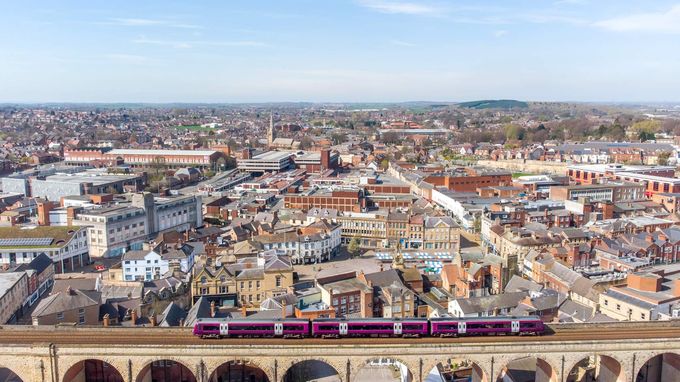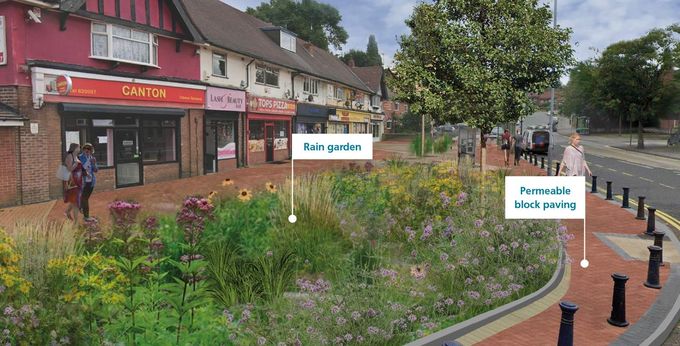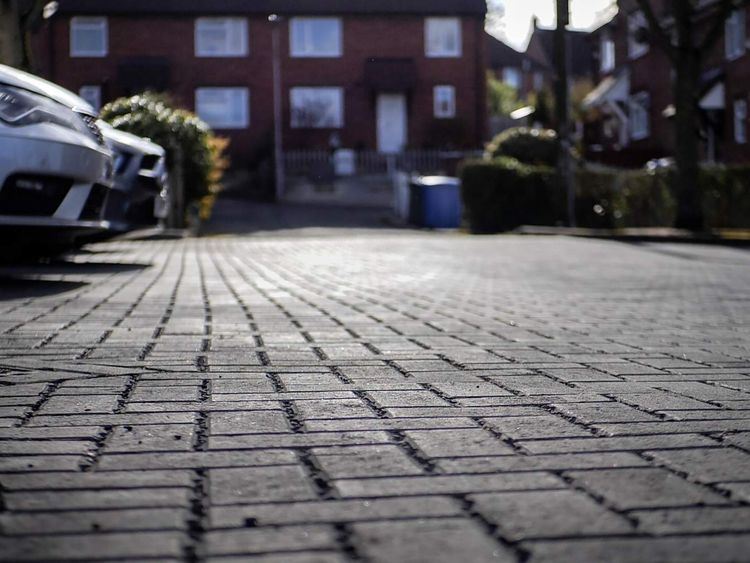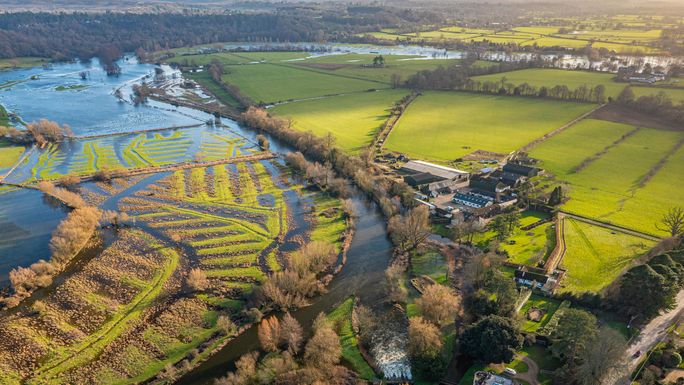The challenge

Mansfield in Nottinghamshire is the site of Severn Trent’s first urban catchment-scale flood resilience programme (credit: iStock/Matthew Troke)
Surface water flooding occurs when the volume of rain falling on the affected area exceeds the capacity of the drains and surface water sewers in that location, meaning that the water cannot escape through these systems or soak into the ground quickly enough.
Also known as pluvial flooding, it usually results from a long period of heavy rainfall, which saturates the ground and renders it incapable of holding any more water. But it can happen when the ground is very dry and the soil becomes hard enough to prevent infiltration.
Flood managers anticipate an increase in surface water flooding as climate change brings warmer and wetter weather. Land development and urbanisation contribute to the risk because they replace green land that absorbs water naturally with impermeable structures such as roads and car parks.
UK water company Severn Trent has analysed the potential effects of such factors on the Nottinghamshire town of Mansfield. The firm has forecast a near-60% increase in flooding in this major catchment under its control by 2050 if no measures are taken to manage the risk.
Severn Trent has chosen this large town, home to more than 110,000 people, for its first urban catchment-scale flood resilience programme – a scheme based on ‘blue-green’ interventions rather than ‘grey’ drainage infrastructure such as surface gullies, culverts and channel drains.
Nature-based solutions known as sustainable drainage systems (SuDS) will be installed throughout Mansfield to store surface water and allow as much of it as possible to infiltrate the underlying ground. Where full infiltration is impossible, the aim is for the remaining rainwater to be returned slowly to the sewer network.
The solutions

Two of the five types of SuDS being installed in Mansfield (credit: Severn Trent)
The Mansfield catchment is well suited to the deployment of blue-green infrastructure, according to Severn Trent, which is aiming to deliver 58m litres of storage this way. That’s 60% of the estimated future network capacity required in the catchment up to 2050, based on predicted population growth and climate change impacts.
More than 20,000 individual SuDS are being installed, covering more than 15ha of the catchment. They fall into the following categories:
- Verge rain gardens feature a combination of plants and soil designed to decelerate the flow of water running from the surrounding hard surfaces. Layers of permeable material below the soil store and filter the water, then release it gradually into the ground.
- Street planters work in the same way as verge rain gardens, but are placed on the highway.
- Bioswales are long channels with sloping grassed sides at the roadside. These store highway runoff and release it slowly into the ground or the sewer network.
- Detention basins are larger than bioswales but work similarly by storing rainwater and letting it seep gradually into the soil. They are often placed in parks and playing fields. They’re usually dry, but they may include a permanently wet area to serve as wildlife habitat.
- Permeable paving is used in car parks, walkways and other hard surfaces. It’s similar to block paving, but has slightly larger gaps that allow surface water to pass through and soak away.
The delivery

Rain gardens have been installed in Mansfield’s central marketplace to reduce the risk of pluvial flooding (credit: Severn Trent)
The project started at a pilot site in 2022 and is due for completion in 2025. Severn Trent is putting £76m into the scheme, equating to 89% of the funding. The remaining finance will come from third party partnerships, including with Mansfield District Council and Nottinghamshire County Council.
Severn Trent appointed Aecom and Arup to develop outline designs and targeted volumes for the SuDS interventions, splitting the catchment into 21 drainage areas. The town has been divided into two, with Aecom working in the east alongside design and build contractor Galliford Try, and Arup in the west with Kier. A separate contractor, CPC Civils, is building the detention basins.
The pilot site scheme helped the team to develop a process for calculating the target volume achievable in each area and a digital tool for site selection.
The calculation tool considers factors such as:
- The contributing area
- Rainwater throughflow rates
- The size and shape of the system to be deployed
- The materials this will use
It then assesses how each intervention would cope with a one-in-10-year storm.
The first objective is to maximise the volume of surface water that enters the ground. Investigations at each proposed site provide information on the hydrogeological conditions, the rate at which infiltration can occur and the amount of storage required to hold the water while that happens.
The team is aiming to install bioswales wherever the conditions are suitable, thanks to their relatively large capacity. It has developed standard designs for these and also the verge rain gardens, street planters and permeable paving. Each detention basin will be bespoke.
The town centre features one area in which work to install SuDS has already been completed. A 600m2 car park here has been replaced with permeable paving and three large rain gardens, which together offer 110m3 of surface water storage.
The future
The Mansfield flood resilience programme is being assessed for its benefits to the town and to determine how well its catchment-wide approach and extensive use of blue-green infrastructure can be applied to other locations.
The University of Sheffield is working with Severn Trent to monitor the performance of the systems in place, develop testing processes and help to assess future SuDS projects.
The Mansfield project will help the company to assess the performance of blue-green solutions as opposed to that of grey infrastructure, considering factors such as their direct costs and wider co-benefits such as carbon reduction and biodiverse habitat creation.
The scheme should also reduce the number of storm overflow activations, as far less surface water will be entering the town’s combined sewer network.
So far, the project has identified clear opportunities for working in partnership with other stakeholders, particularly local authorities.
Severn Trent also wants to engage with businesses and other private site owners. To this end, it’s setting up a trial to incentivise site owners in Mansfield to have SuDS installed on their properties.
Sign up to receive news from ICE Knowledge direct to your inbox.







